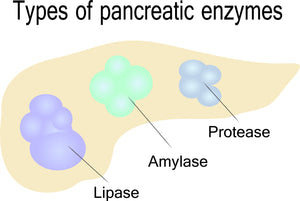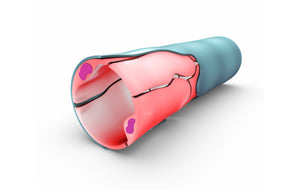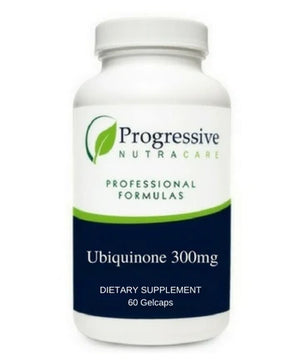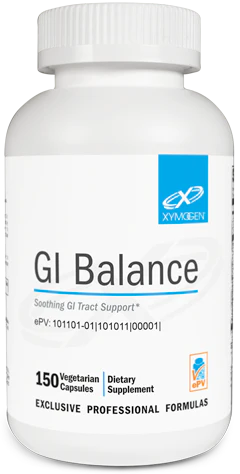Alpha-lipoic acid, the universal antioxidant? Part 1

Excitement about Alpha-lipoic acid in the scientific community has led to an explosion of studies into the compound to determine how far-reaching its effects might be for maintaining human health. The compound itself is naturally occurring and produced from plants, animals, and humans. Also called thioctic acid, it is unfortunately only produced in small amounts in the human body, and although can be found in foods, there too in only small amounts. Moreover, the compound can sometimes be difficult to absorb and can break down quickly- meaning that its bioavailability can be limited. It is a powerful antioxidant, and our understanding of its role in a variety of chemical and metabolic processes is continually being expanded. Luckily, Alpha-lipoic acid (ALA) is available as a supplement to take orally, and improved formulations of ALA make it more stable and more bioavailable, meaning you will uptake more of the compound and that it will last longer in the body. We’ve previously blogged about ALA and its use as an antioxidant, as a useful tool against diabetic neuropathy, and its use topically in skin creams. Let’s take a closer look at its antioxidant properties and examine some other uses for ALA. We’ll also take a deeper dive into choosing the type of ALA you should take as a supplement.
Universal Antioxidant
As we’ve mentioned in our previous blog, ALA is both fat and water-soluble. In addition, ALA can neutralize ROS (Reactive Oxygen Species generation) everywhere in the body- both within and outside of cells. This is important because ROS is a primary factor in inflammation, and excessive ROS generation is linked to the generation of Diabetes Mellitus. ALA also regenerates glutathione, specifically in cells, also important for decreasing the risk for diabetes. ALA acts as both a free radical scavenger and repairs oxidative damage. In these roles, it can also act to chelate metals from the body, including Iron and Copper. The combination of all of these anti-oxidative traits has led Alpha-lipoic acid to be called “the Universal Antioxidant”: “Briefly, ALA is conceived as a biological antioxidant that is both water- and fat-soluble and is capable to neutralize ROS everywhere in the body, inside and outside the cells, and for this reason, ALA is being referred as the universal antioxidant” (Salehi, et al, 2019)
Our last blog on the subject explored ALA’s use as a possible treatment for neuropathy resulting from diabetes. Indeed there are excellent studies on the use of ALA to treat diabetic neuropathy (Ziegler 2016, Garcia-Alacala, et al 2015; Sun, et al 2017; Agathos, et al 2018 for instance). These studies show both incidence and pain from neuropathy can be decreased. If diabetic neuropathy can be decreased by using a natural product like ALA, this could be good news indeed. 37.3 million people in the United States have diabetes (about 1 in 10), and neuropathy is one of the most dangerous effects. The longer someone is hyperglycemic, the greater chance someone will develop neuropathy, and neuropathy can ultimately lead to amputation and/or death since the lack of blood flow, and the lack of sensation can lead to wounds and infections. This raises the risk for opportunistic infections like Staphylococcus aureus. Indeed, aside from helping with neuropathy itself, ALA seems to increase sugar intake in insulin-resistant muscle tissue, and stimulate glucose uptake in general, thereby potentially helping hyperglycemia. Several studies have concluded that ALA could help control diabetes by inhibiting glycation, which generates free radicals.
Alzheimer’s
Since ALA seems to have effects that prevent cell toxicity, it can act to help protect cortical neurons in the brain. One study demonstrated that ALA can protect neurons in the hippocampus against toxicity (Quinn et al, 2010). Many studies have demonstrated that Alzheimer’s disease is at least partly caused by oxidative stress, and not only has ALA been demonstrated to combat oxidative stress through the decrease of free radicals, but ALA has also shown anti-dementia properties by increasing glucose absorption which in turn increases ACh production and ultimately decreasing enzyme activity in the brain and slowing onset of the disease. (Salehi, et al 2019 cited above). "Inflammation has also been implicated in Alzheimer’s, as amyloid plaques are implicated as are higher levels of free radicals. Again, ALA has shown promise by scavenging ROS, transition metal ions, increasing the levels of reduced glutathione, scavenging of lipid peroxidation products, and even acting on signal transduction pathways" (also Salehi, et al). This is all very promising and could lead to the eventual prevention or control of Alzheimer’s Disease.
Cancer
Another promising line of research is in the use of ALA to help control various cancers. The line of reasoning for many ALA cancer trials is its potential use in the Warburg effect, also known as aerobic glycolysis. Basically, cancer cells convert glucose instead of lactate for ATP generation. This ongoing process of aerobic glycolysis activates cancer cells or leads to a loss of tumor suppressors, which leads to cancer progression. Decreasing this aerobic cycle may therefore decrease the progression of cancer. A few studies have examined ALA to see if it may help in this respect, and in fact “Feuerecker et al. investigated whether ALA is capable of activating pyruvate dehydrogenase in tumor cells. The results show that ALA inhibited cell proliferation, [18F]-FDG uptake and lactate formation, and increased apoptosis in neuroblastoma cell lines Kelly, SK-N-SH, Neuro-2a, and in the breast cancer cell line SkBr3. In the mouse xenograft model with subcutaneously SkBr3 cells, daily treatment with ALA has delayed tumor growth.” (as quoted in Salehi, above) Other studies have examined other pathways that ALA may affect and found some promise in ALA suppressing cell growth in thyroid, lung, colon, and breast cancers (also Salehi). Again, more research is needed, but the initial results are promising.
Weight loss
Our earlier blog examined this to some extent, and some studies have evaluated ALA as part of a regimen to combat obesity. Huerta, et al in 2015 examined ALA and its effects on leptin levels: “the ALA treated group showed significantly higher body weight loss and an important drop in leptin levels from the first week of treatment, despite no significant decrease in their resting metabolic rate was stated. A notable drop in triglyceride levels and diastolic blood pressure (DBP) was found in EPA plus ALA supplemented group. In general, all groups, except EPA supplemented one, had a significant reduction in leptin levels and marked improvements in insulin levels during the oral glucose tolerance test (OGTT). No unfavorable effects were stated in the clinical trial period.” Again, promising results for further study, but other studies showed mixed results. All studies found that ALA was well tolerated and there was a dearth of side effects.
Multiple Sclerosis
Since ALA seems to inhibit T cells and inflammation, there is some hope that ALA may help with MS as well. MS is a result of inflammation and demyelination of the central nervous system. MS inflammation is caused by the invasion of T cells into the central nervous system. Studies have measured whether ALA can effectively inhibit T cells in MS, and also whether other pathways to decrease inflammation in MS might exist (Khalili, et al, Neuroimmunomodulation. 2014).
Another very interesting study examined whether ALA could have a direct result on improving physical functions in MS patients. A hallmark of the condition is a deterioration of gait and other walking functions. ALA was found to markedly improve walking in the trial group: “ALA was examined and compared with placebo on 21 subjects during 2 years and the improvement in physical functions was assessed by Timed Up and Go (TUG) and quiet standing tasks in the particular periods. As a result, it was reported that ALA-treated patients with less disability showed a significantly better turning time in TUG-fast task, which measures the ability of patients how much walking quickly compared to the placebo group.” (Loy, et al, Complement. Ther. Med. 2018)
Pregnancy
Studies have shown that adding ALA to progesterone in those women who had a risk of miscarriage decreased their risk. (Porcaro, et al, Eur. Rev. Med. Pharmacol. Sci. 2015). This research is in its beginning, but research into progesterone therapy for miscarriage is now starting to be focused on supplementing this therapy with ALA. Other studies have shown that ALA might help protect the fetus from developing birth defects from chemical or other toxic exposure by the Mother, and from the effects of diabetes in the Mother. A relatively recent Italian study (Parente, et al 2017) demonstrated that it is safe to take ALA during pregnancy “Our study was carried out with 610 expectant mothers, and showed that ALA oral treatment is completely safe also during pregnancy. ALA was administered without interruptions up to six months at the dose of 600 mg per day. It did not bring out any adverse effect both in mothers and infants.”
Because of the versatility of ALA, and its effects on a variety of pathways in the body, particularly its antioxidant effects, its ability to uptake glucose, and its ability to scavenge free radicals and metal ions, there are many other conditions that ALA trials may eventually be conducted for. This overview is an attempt to communicate how important this ingredient may be to contribute to overall health. Part 2 will focus on the type of ALA you should be taking and how that affects its effectiveness.
*By including product links in this article, Progressive Nutracare is providing a reference to our readers to assist in searching and cataloging the site. These products have not been evaluated by the F.D.A. are not intended to treat, diagnose, cure, or prevent disease.
- Tags: Article Cancer Immune Weight Management
- Robert Thomas







Comments 0